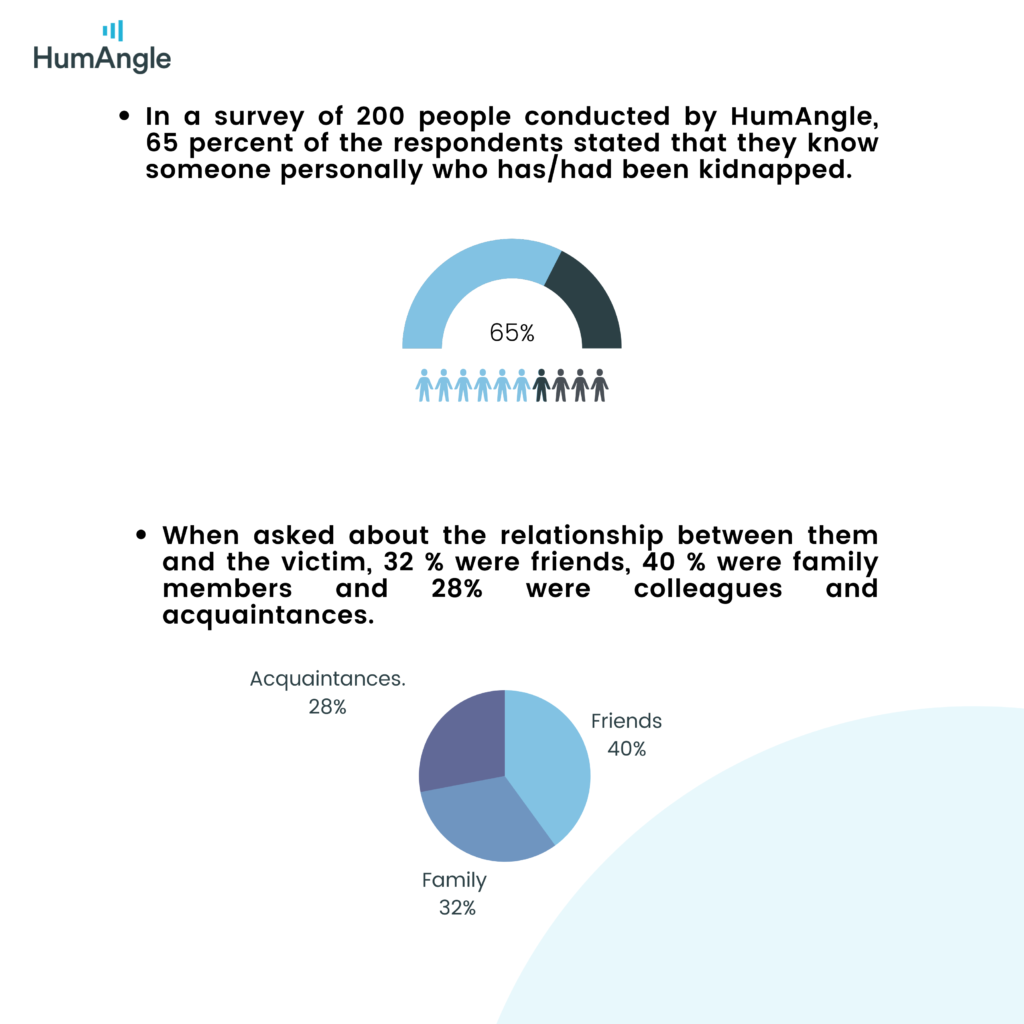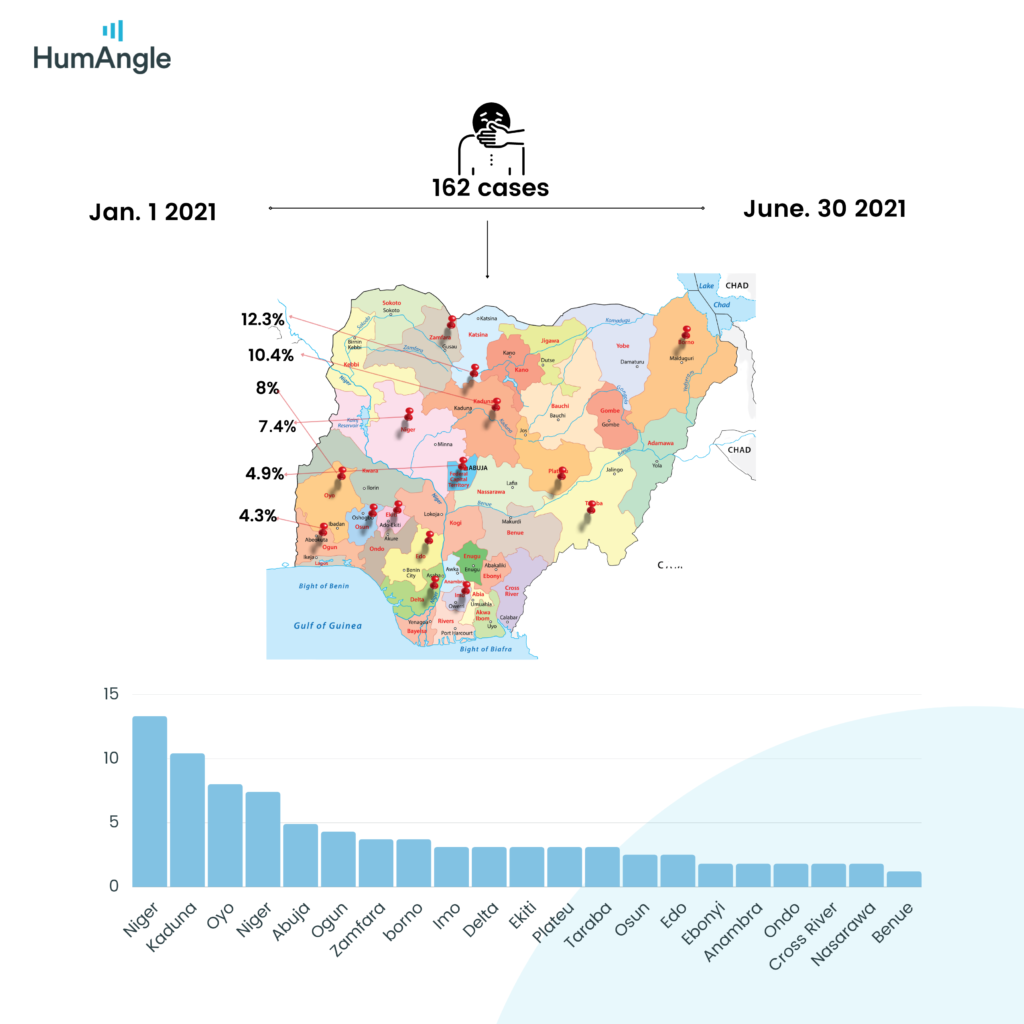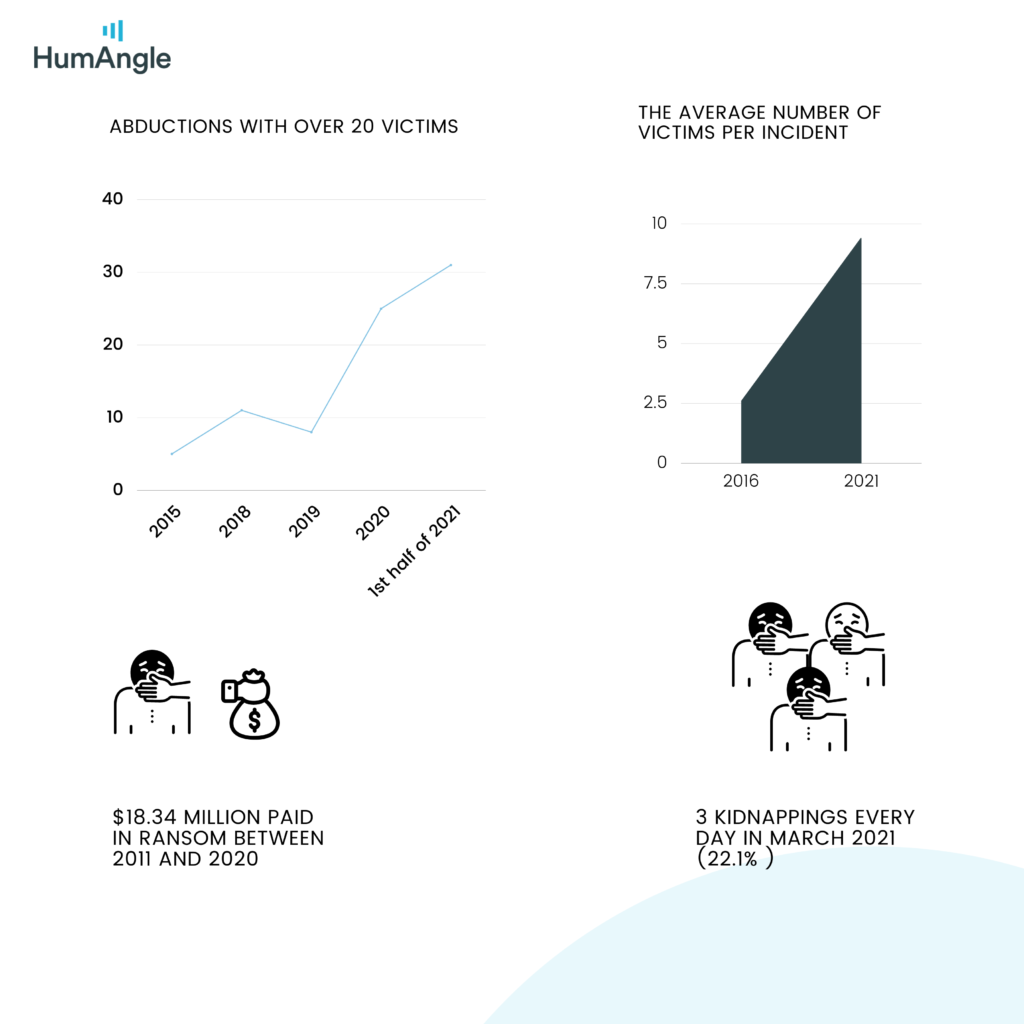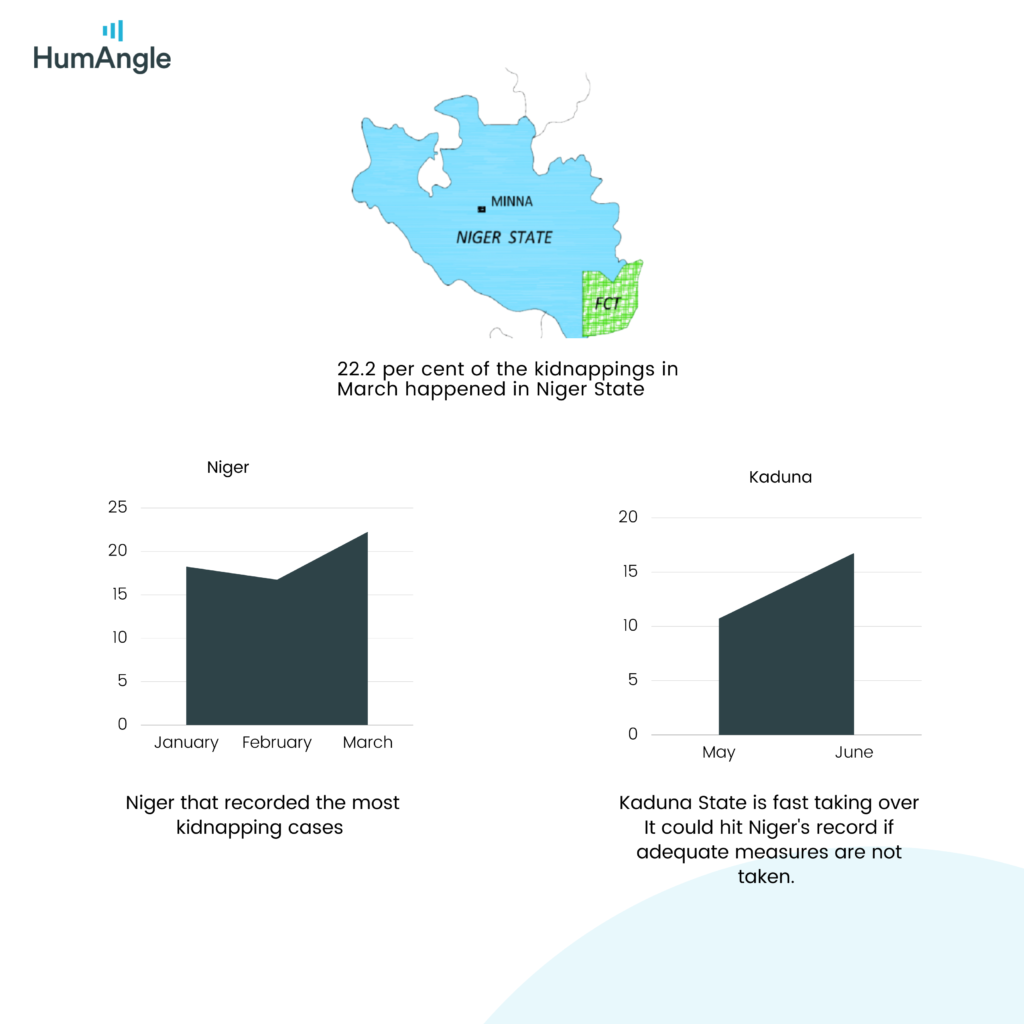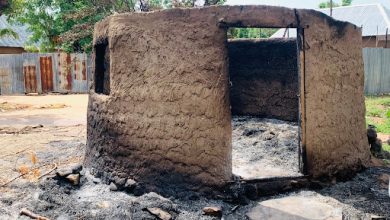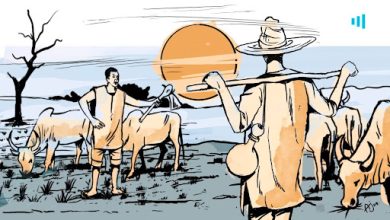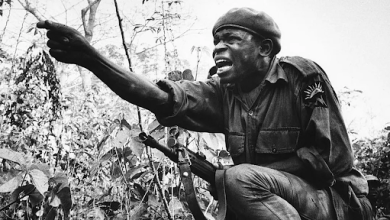Nigerians Are One Friend, Family Member Away From A Kidnapping
Data shows that one is more likely to be kidnapped in Niger state although Kaduna is fast rising to claim the top spot.
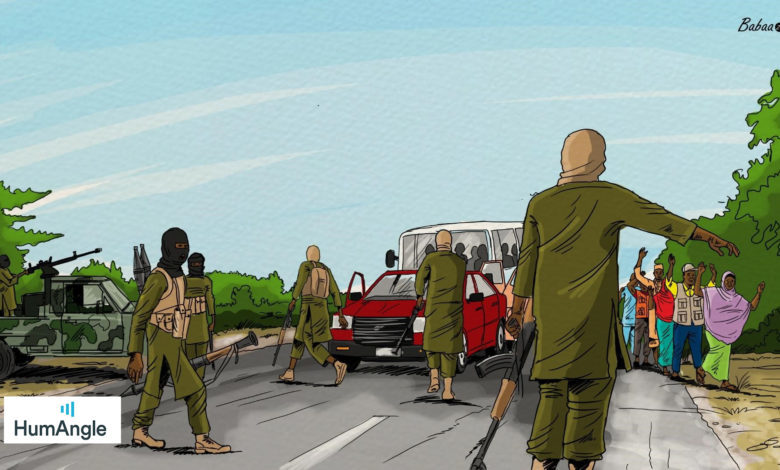
It is dark days melting into darker nights as uncertainty washes over and thoughts tilt more towards the worse than the best. This is how people like Olarenwaju*, whose families and friends have been kidnapped, describe the waiting period. When his friend and flatmate, Joseph* went missing in May 2021, nothing could prepare him for “the horrifying experience.”
“From my end, I was trying to see if I could contact security officials to help us track his whereabouts, which by the way was fruitless. We had to cough out 1.5 million Naira for his release. It was not a nice thing, I must say. Joseph was transported from one state to another and is still suffering trauma,” he told HumAngle.
In a survey of 200 people conducted by HumAngle, 65 per cent of the respondents stated that they know someone personally who has/had been kidnapped. When asked about the relationship between them and the victim, 32 per cent were friends, 40 per cent were family members and 28 per cent were colleagues and acquaintances.
Rukkaya’s* uncle was kidnapped in Niger State. Narrating to HumAngle, she said, “The kidnappers came into our village in Rafi LGA and kidnapped him. He was kidnapped alongside some children. When the kidnappers asked for a fee and it was given, they only released the children and held onto my uncle, he was not released until a fine of about five million Naira was paid.”
Kidnapping numbers across Nigeria
HumAngle reviewed 162 kidnapping cases that were reported by the media between Jan. 1 and June 30, 2021. Analysis showed that 12.3 per cent of the cases were from Niger State, 10.4 per cent from Kaduna, eight per cent from Oyo, 7.4 per cent from Katsina, and 4.9 percent from the Federal Capital Territory (FCT).
Ogun State represented 4.3 per cent of the reported kidnapping cases, while Zamfara, and Borno States had 3.7 per cent of the total cases reviewed each. Taraba, Delta, Ekiti, Imo, and Plateau states had 3.1 per cent each; Osun and Edo states had 2.5 per cent each. states recorded 1.8 per cent each while Benue state had 1.2 per cent of the total reviewed cases.
In terms of geopolitical zones, North-central recorded 27 per cent of the cases, Northwest 20.9 per cent, South-south recorded 14.4 per cent, Southwest 10.4 percent, Northeast 6.8 per cent, and Southeast recorded 6.7 per cent.
Data also showed that 13.5 per cent of these reported cases took place in January, 14.7 per cent in February, 22.1 per cent in March, 17.5 per cent in April, 17.2 per cent in May, and 14.7 per cent in June.
More chilling statistics…
The rate of kidnapping in Nigeria has more than doubled so far in 2021 compared to previous years. By analysing data collected through the Nigeria Security Tracker (NST) between 2015 and June 2021, HumAngle observed a growing trend in the number of mass abductions as well as the total number of people who are victims of kidnapping in the country.
While in 2017, there were 484 kidnapping victims, the figure grew to 987 the following year, then 1,386 in 2019, and 2,860 in 2020. Between Jan. 1 and June 30, 2021, at least 2,944 people have already been reported kidnapped — making 2021 the worst year yet based on this security index. These numbers are higher if communities along the border areas in Cameroon, Chad, and the Niger Republic are taken into account.
The number of kidnapping incidents has increased too, from 110 in 2015 to 135 in 2016, 140 in 2017, 156 in 2018, 330 in 2019, 437 in 2020, and then 315 in the first half of 2021.
Another worrisome trend is the increase in the number of mass abductions. The average number of victims per incident has increased over the years from 2.6 in 2016 to 9.4 this year. While there were five abductions in 2015 with over 20 victims, Nigeria recorded 11 of such cases in 2018, eight in 2019, 25 in 2020, and 31 within the first six months of 2021.
In a report published last year, research group SBM Intelligence described the problem as the “democratisation of the kidnap industry,” estimating that, between 2011 and 2020, at least $18.34 million was paid as ransom to kidnappers in the country.
More likely to be kidnapped where?
Media records analysed by HumAngle also show that at least three kidnappings were reported every day in March leading it to be the month with the most recorded cases – 22.1 per cent. Interestingly, 22.2 per cent of the kidnappings that occurred in the month of March happened in Niger State.
Shiroro, Rafi, Wushishi, and Suleja, according to analysed data, were the places in Niger that recorded the most kidnapping cases.
Niger had a steady climb to the top. In January, the state had the highest record of reported cases with 18.2 per cent. It retained top position in February with 16.7 per cent, only a little lower because Borno State, Rivers State, and the FCT recorded 12.5 per cent each.
By March, the cases peaked at 22.2 per cent and by April, Niger State was overtaken by Oyo State which pulled in 17.2 per cent of the recorded cases.
Kaduna State is fast taking over. In May, it had the highest reports – 10.7 per cent and in June the number rose to 16.7 per cent. It could hit Niger’s record if adequate measures are not taken.
*Asterisked names have been changed to protect the respondents.
Support Our Journalism
There are millions of ordinary people affected by conflict in Africa whose stories are missing in the mainstream media. HumAngle is determined to tell those challenging and under-reported stories, hoping that the people impacted by these conflicts will find the safety and security they deserve.
To ensure that we continue to provide public service coverage, we have a small favour to ask you. We want you to be part of our journalistic endeavour by contributing a token to us.
Your donation will further promote a robust, free, and independent media.
Donate HereStay Closer To The Stories That Matter

